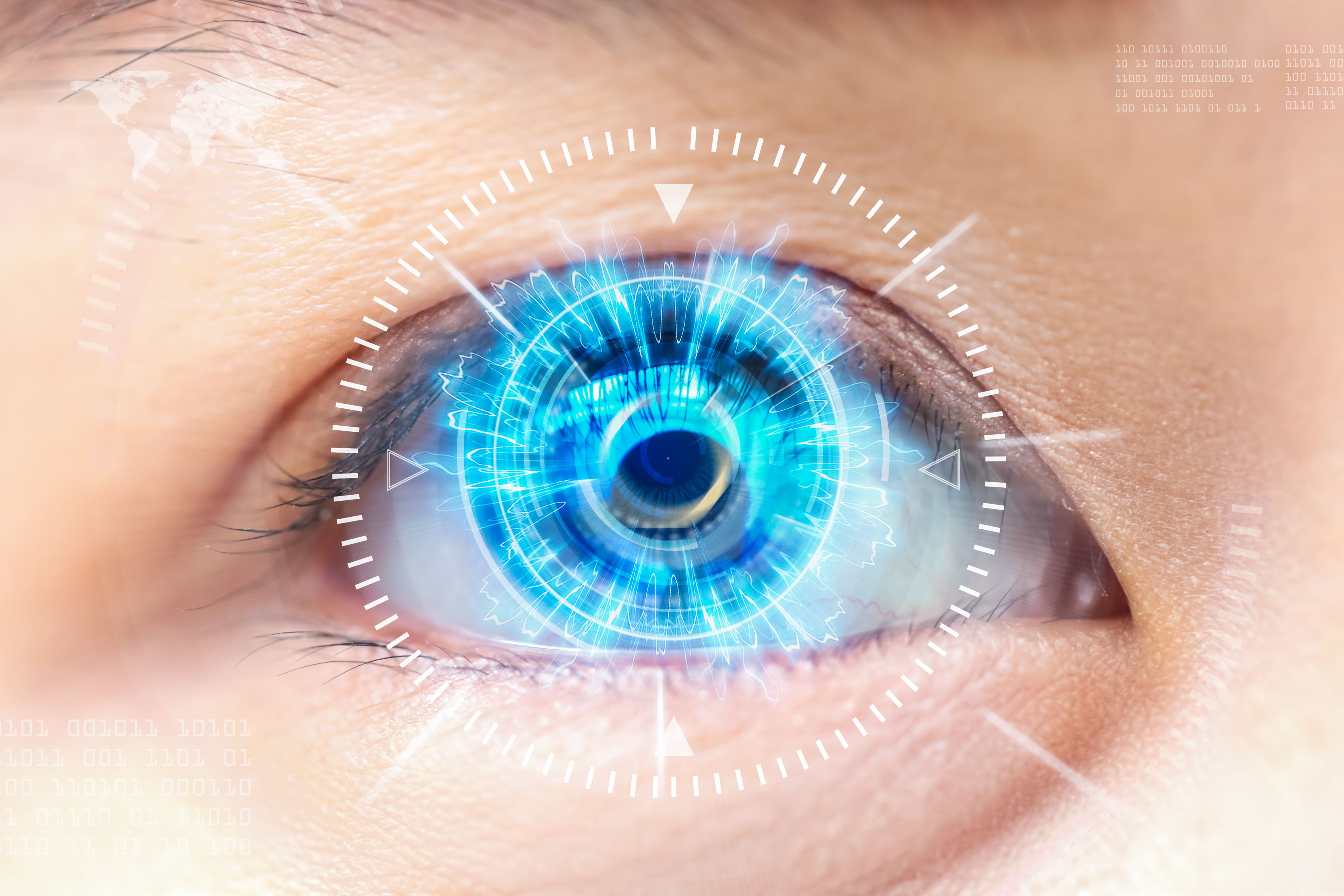Ocular Viscosurgical Devices Relieve Cataract Surgery Complications
These devices help maintain the natural order of the eye during the surgery.
Close-up blue eye. High technology the futuristic. : cataract - jayzynism - stock.adobe.com

Cataract surgery may take just 45 minutes or so per eye, but much goes on during those 45 minutes. While cataract surgery has a good success record–one in 50 surgeries could have complications–that one complication is usually decreased or blurry vision, or worse. Products called ocular viscosurgical devices (OVD) are used to relieve some of those complication-causing issues. These therapies, among other benefits, maintain the depth of the anterior chamber and protect the corneal endothelium and other tissues.
The cloudy lens that needs to be removed sits under the cornea and the anterior chamber, which holds fluid that keeps the eye moist. This chamber also maintains the right level of intraocular pressure; it does so by regulating the fluid entering and exiting the front of the eye. Lining the underside of the cornea are endothelial cells. These cells are responsible for pumping fluid out; without them, the lens gets cloudy. The vitreous chamber, behind the lens, maintains the eye’s shape and absorbs shock.
Ocular viscosurgical devices of various kinds have been approved for some time to help keep the natural order to the eye during surgery. The latest, approved in February, is called StableVisc and TotalVisc Ophthalmic Viscosurgical Device (Bausch Health Companies, Bridgewater, NJ). This product was approved to maintain the integrity of the anterior chamber; reinflate the capsular bag so the new lens can be inserted; and protect the all-important corneal endothelium from damage during surgery.
Two years ago, the FDA gave approval to another Bausch OVD called ClearVisc; ClearVisc and StableVisc will be packaged together–hence the Total Disc label. ClearVisc was approved to protect the eye against the dispersions of free radicals, which can form during the cataract procedure. Both products are delivered via injection. They were both approved after proving noninferiority in randomized trials.
References
- Overview. Cataract surgery. NHS https://www.nhs.uk/conditions/cataract-surgery/#:~:text=Risks%20of%20surgery,around%201%20in%2050%20cases
- Borkenstein AF, Borkenstein EM, Malyugin B. Ophthalmic Viscosurgical Devices (OVDs) in Challenging Cases: a Review. Ophthalmol Ther. 2021 Dec;10(4):831-843. doi: 10.1007/s40123-021-00403-9. Epub 2021 Oct 6. PMID: 34617249; PMCID: PMC8589875.
- Cleveland Clinic. Aqueous Humor & Vitreous Humor. Aqueous and Vitreous Humor: Anatomy, Function & Location
- FDA. StableVisc and TotalVisc Ophthalmic Viscosurgical Device – P220009. StableVisc and TotalVisc Ophthalmic Viscosurgical Device – P220009 | FDA
- FDA. StableVisc package label https://www.accessdata.fda.gov/cdrh_docs/pdf22/P220009C.pdf
- Ophthalmic Viscosurgical Devices (OVDs) in Challenging Cases: a Review - PMC
- FDA. Premarket approval. https://www.accessdata.fda.gov/scripts/cdrh/cfdocs/cfpma/pma.cfm?id=P200025
- Press release. FDA Approves Bausch + Lomb ClearVisc™ Dispersive Ophthalmic ViscosurgicalDevice. April 07, 2021. https://ir.bauschhealth.com/news-releases/2021/04-07-2021-123124958